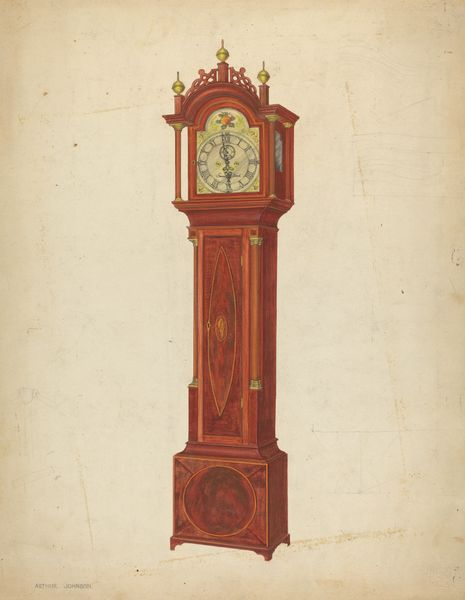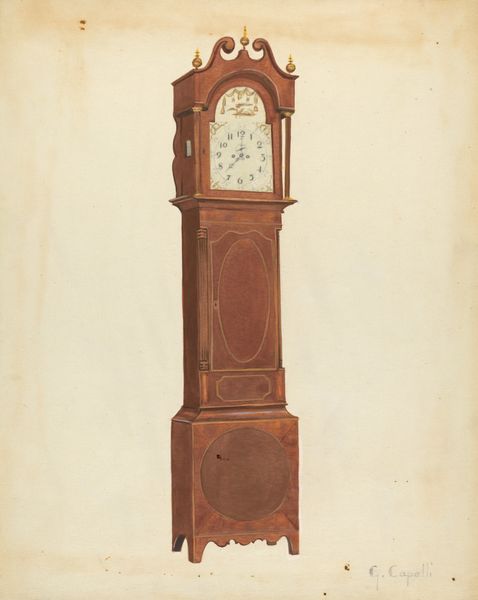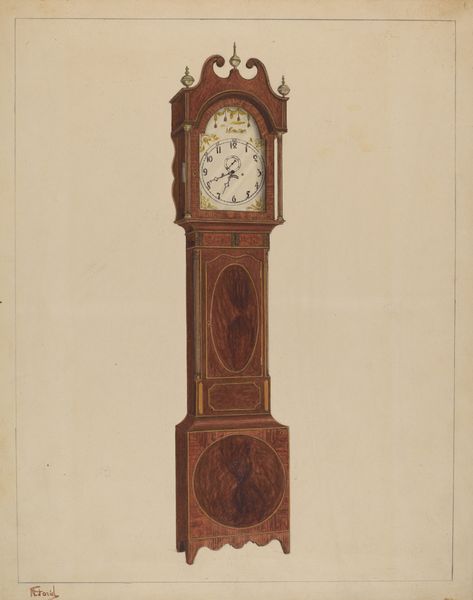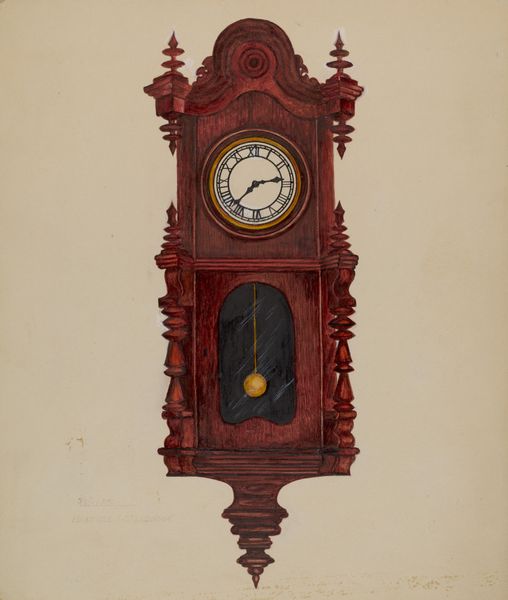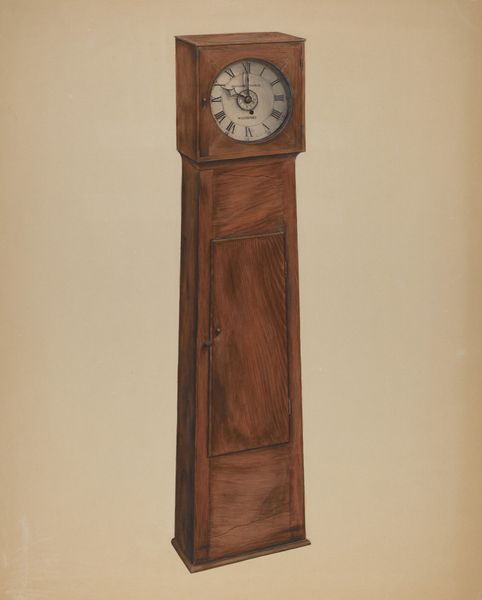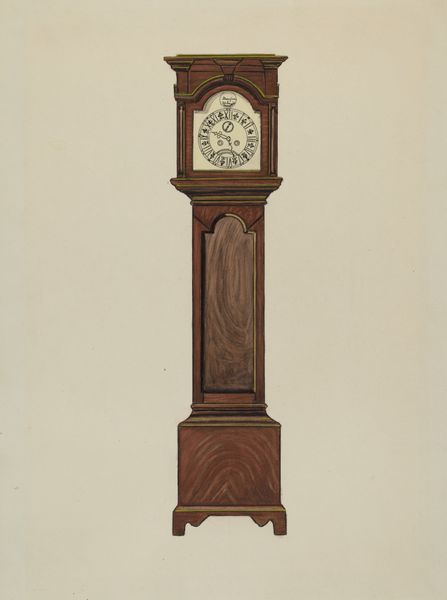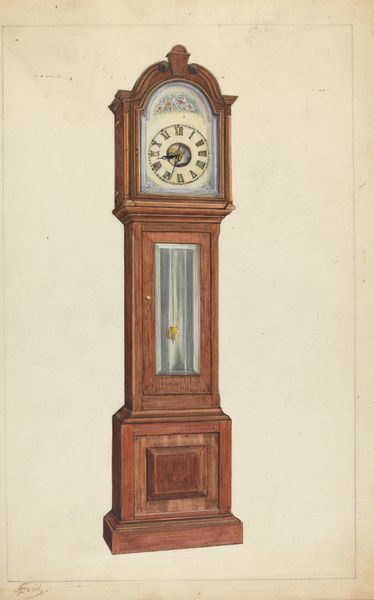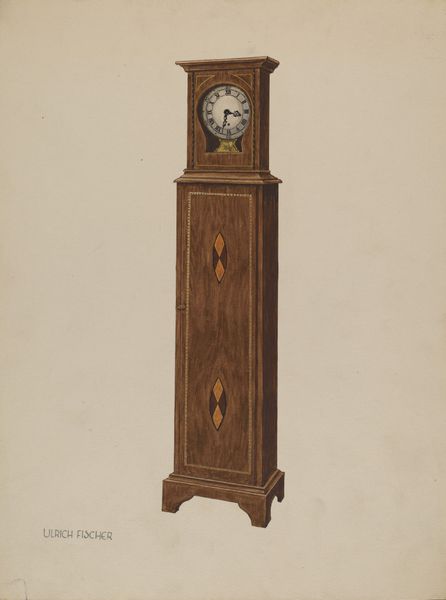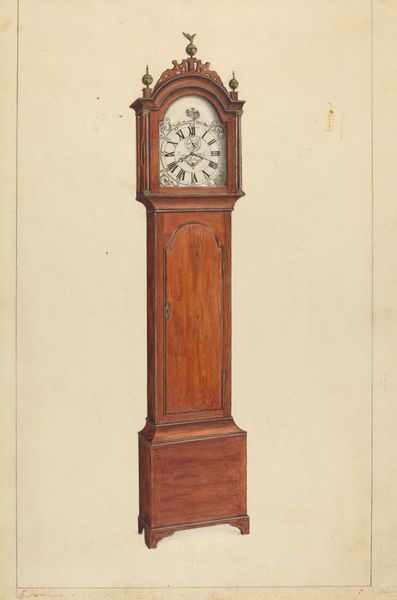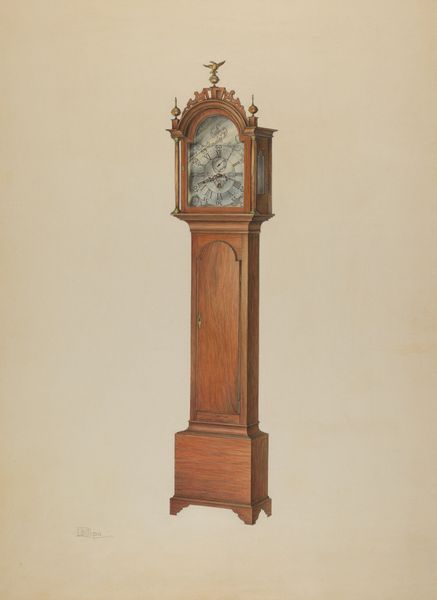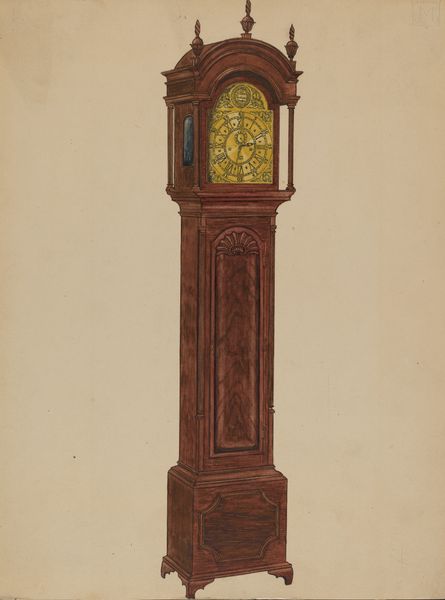
drawing, watercolor
#
drawing
#
watercolor
#
watercolour illustration
#
watercolor
Dimensions: overall: 35.5 x 26.2 cm (14 x 10 5/16 in.) Original IAD Object: 94" x 17 3/4" x 9 1/2". See verso of data sheet for dets.
Copyright: National Gallery of Art: CC0 1.0
Editor: This watercolor drawing from 1936, "Grandfather's Clock" by Cornelius Frazier, feels very precise, almost like a technical illustration. The red wood is the central element in this piece and makes me think about domestic life during the period it was made. How do you see this object represented, as an illustration and artwork? Curator: The stark rendering of this clock truly brings forth a focus on the materials and process. Consider the wood itself – where was it sourced? How was it treated? What were the social and economic conditions that allowed for such a crafted object to exist, and then be meticulously rendered in this medium? Editor: That makes me wonder about the labour involved, both in creating the clock and illustrating it. It is like we're seeing two levels of craft here. Curator: Exactly. The very *idea* of "grandfather's clock" – what kind of labour supported a household spacious and comfortable enough to have one of these? Think of this not just as an image of a clock, but as a record of a certain kind of aspiration and class structure rendered through watercolor and the labour put into crafting both image and object. It asks, what does it mean to own this artwork or a clock, in this period of the past, or today? Editor: So it is not necessarily about the art historical value, but the tangible story behind the wood itself, the pigment used, the social context, that matter most. Curator: Precisely. This drawing of the clock opens a door to discussing the history of labor and domestic objects. By analyzing the choices behind the wood grain, pigments and stylistic elements, we uncover a wealth of information about both the time and our understanding of art history. Editor: This perspective truly shifts my appreciation for the piece. Thank you! Curator: My pleasure! It is inspiring to think more expansively about our understanding and interactions with artwork as it relates to labor and production.
Comments
No comments
Be the first to comment and join the conversation on the ultimate creative platform.
